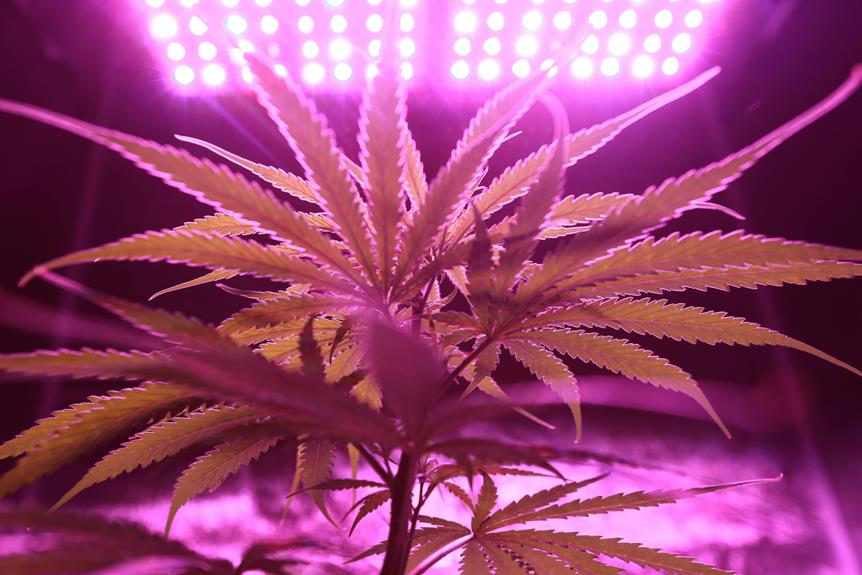
With the increasing popularity of indoor gardening and cultivation, the role of LED grow lights in enhancing plant growth has become a focal point of discussion. You might be surprised to learn about the intricate ways in which LED lights influence plants in indoor settings. From influencing photosynthesis to optimizing growth conditions, LED grow lights have a profound impact on the overall health and development of plants. Understanding the nuances of this technology can truly revolutionize your indoor gardening experience.
Benefits of Using LED Grow Lights
When using LED grow lights, you can expect increased energy efficiency and improved plant growth compared to traditional lighting sources. LED lights are designed to emit specific wavelengths of light that plants need for photosynthesis, which leads to more efficient growth. Unlike traditional lights, LEDs produce little heat, reducing the risk of burning your plants and allowing the lights to be placed closer to the foliage without causing damage.
LED grow lights also have a longer lifespan than traditional lighting sources, saving you money in the long run by reducing the frequency of bulb replacements. Additionally, LEDs are more environmentally friendly as they contain no harmful substances like mercury, which is commonly found in other types of bulbs. This means that when you use LED grow lights, you aren't only benefiting your plants but also contributing to a more sustainable indoor gardening practice.
Factors Influencing Plant Growth
Factors influencing plant growth encompass a wide range of variables that play crucial roles in determining the health and development of indoor plants. Light intensity, spectrum, and duration are key factors that directly impact photosynthesis and plant growth. Plants require different light intensities during various growth stages, with insufficient light leading to stunted growth.
Temperature is another critical factor, as each plant species has an optimal temperature range for growth. Humidity levels influence transpiration and nutrient uptake, affecting overall plant health. Proper air circulation is essential to prevent mold and mildew growth, ensuring plants can thrive.
Water quality and nutrient levels in the soil directly affect plant growth, with imbalances leading to nutrient deficiencies or toxicities. Additionally, the pH level of the soil plays a vital role in nutrient availability to plants. Understanding and managing these factors are essential for creating optimal growing conditions for indoor plants to flourish.
Comparing LED Grow Lights to Other Lighting Options
To understand the benefits of LED grow lights over other lighting options, consider their efficiency in promoting indoor plant growth. LED grow lights are superior to traditional lighting options like incandescent and fluorescent bulbs for indoor plant cultivation.
LED lights emit specific wavelengths of light that plants can efficiently absorb for photosynthesis, promoting healthy growth. In comparison, incandescent bulbs produce a lot of heat, which can potentially harm plants if placed too close, and they lack the ideal light spectrum for optimal growth.
Fluorescent lights are more energy-efficient than incandescent bulbs, but they still fall short compared to LEDs in terms of providing the necessary light intensity and spectrum for robust plant development. Additionally, LED grow lights have a longer lifespan, consuming less energy and generating less heat, making them a more cost-effective and plant-friendly option for indoor gardening.
When choosing a lighting option for your indoor plants, the efficiency and effectiveness of LED grow lights make them a top choice for promoting healthy growth.
Tips for Optimizing LED Grow Light Performance
For optimal performance of your LED grow lights, ensure proper positioning and spacing to maximize light distribution and coverage for your indoor plants.
Place the lights at the appropriate height above your plants, typically between 12 to 30 inches, depending on the specific light requirements of your plant species.
Ensure that each plant receives adequate light by avoiding overcrowding and adjusting the light angles as needed.
It's essential to regularly clean the lights and remove any dust or debris that may obstruct the light output.
Additionally, consider using reflective materials around your plants to enhance light penetration and distribution.
Monitor the light intensity and duration to meet the specific needs of your plants during different growth stages.
Adjust the light settings accordingly, providing sufficient light without causing light stress or heat damage to your plants.





